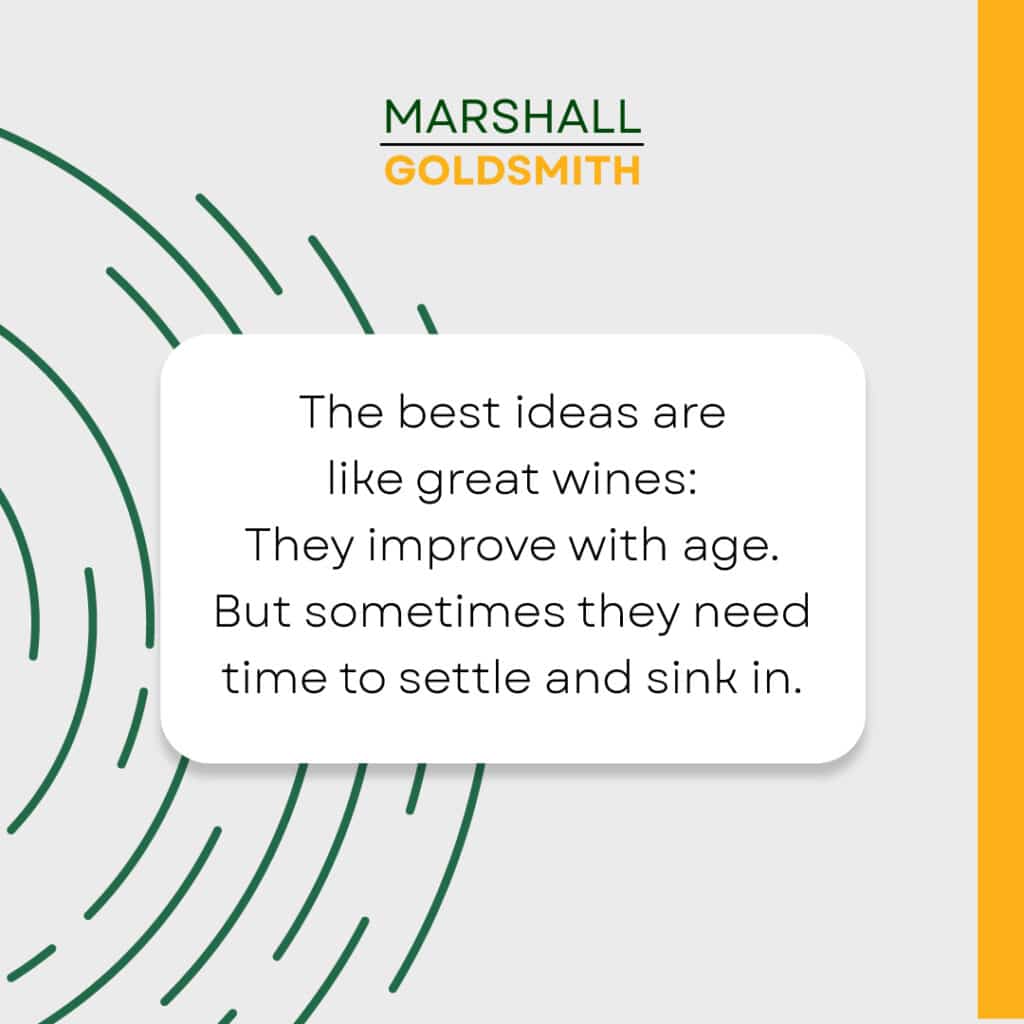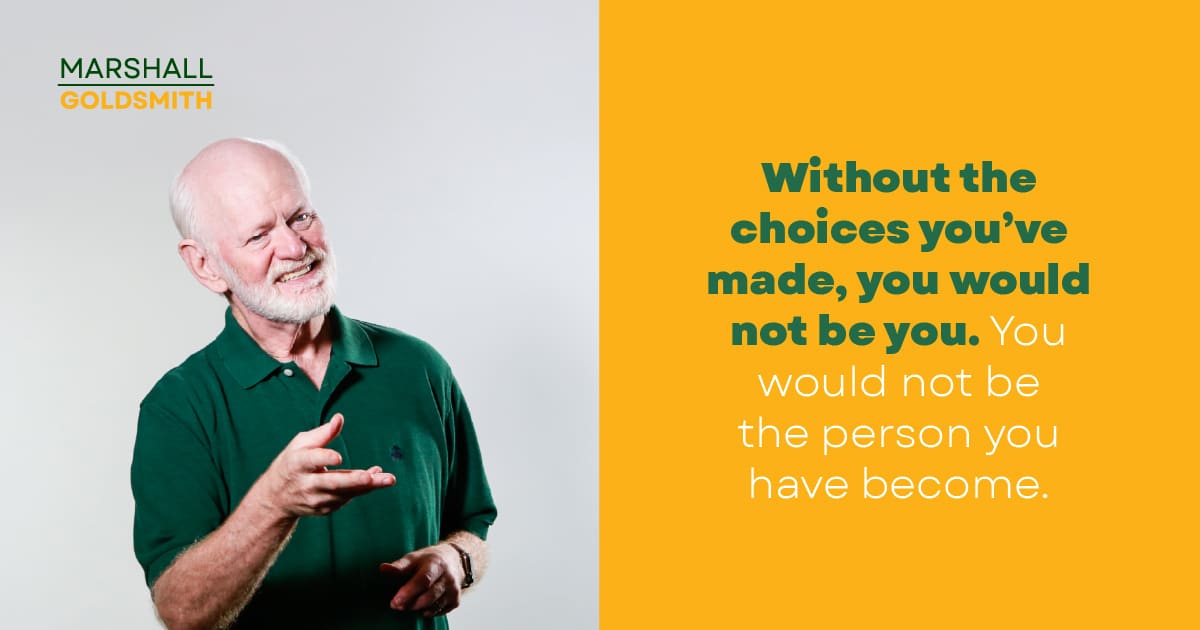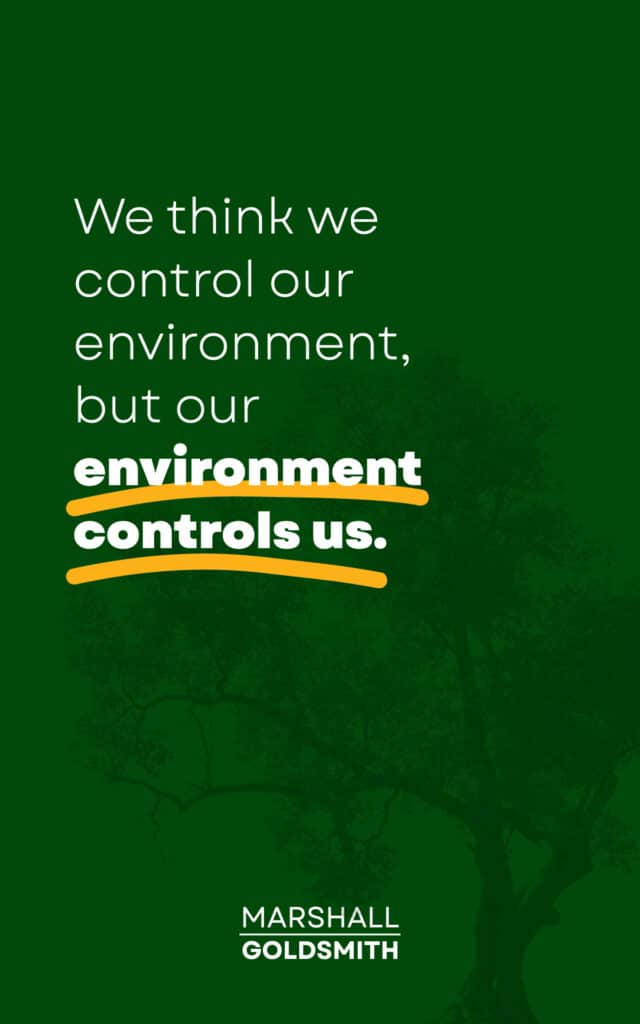Playing Favorites By Marshall Goldsmith There’s a reason I devote...
My mission is to help successful leaders achieve positive, long-term, measurable change in behavior: for themselves, their people and their teams. When the steps in the coaching process described below are followed, leaders almost always positive behavioral change – not as judged by themselves, but as judged by pre-selected, key stakeholders. This process has been used around the world with great success – by both external coaches and internal coaches1.
Our “Pay for Results” Executive Coaching Process
Our coaching network (Stakeholder Centered Coaching) provides coaches for leaders from around the world. All of the coaches in our network use the same proven process. At the beginning of our coaching relationship, we get an agreement with our coaching clients and their managers on two key variables: 1) what are the key behaviors that will make the biggest positive change in increased leadership effectiveness and 2) who are the key stakeholders that can determine (twelve to eighteen months later) if these changes have occurred.

We then get paid only after our coaching clients have achieved positive change in key leadership behaviors – and become more effective leaders – as determined by their key stakeholders.
I believe that many leadership coaches are paid for the wrong reasons. Their income is a largely a function of “How much do my clients like me?” and “How much time did I spend in coaching?” Neither of these is a good metric for achieving a positive, long-term change in behavior.
In terms of liking the coach – I have never seen a study that showed that clients’ love of a coach was highly correlated with their change in behavior. In fact, if coaches become too concerned with being loved by their clients – they may not provide honest feedback when it is needed.
In terms of spending clients’ time – my personal coaching clients’ are all executives whose decisions impact billions of dollars – their time is more valuable than mine. I try to spend as little of their time as necessary to achieve the desired results. The last thing they need is for me to waste their time!
Qualifying the Coaching Client:
Knowing When Behavioral Coaching Won’t Help
Since we use a “pay only for results” coaching process, we have had to learn to qualify our coaching clients. This means that we only work with clients that we believe will greatly benefit from our coaching process.
We do not work with leaders who are not really motivated to change. Have you ever tried to change the behavior of a successful adult that had no interest in changing? How much luck did you have? Probably none! We only work with executives who are willing to make a sincere effort to change and who believe that this change will help them become better leaders. Our most successful coaching clients are executives who are committed to being great role models for leadership development and for living their company’s values.
I have personally worked with several of the world’s leading CEOs. One reason that they are so effective in leading people is that they are always trying to improve themselves – not just asking everyone else to improve. Our best coaching clients are dedicated to be great role models in consistently working to improve themselves.
Some large corporations “write people off”. Rather than just fire them, they engage in a pseudo behavioral coaching process that is more “seek and destroy” than “help people get better”. We only work with leaders that are seen as potentially having a great future in the corporation. We only work with people who will be given a fair chance by their management. We do not work with leaders who have been “written off” by senior management.
There are several different types of coaching. We only do behavioral coaching for successful executives – not strategic coaching, life planning, or organizational change. I have the highest respect for the coaches that do this kind of work. That is just not what our coaches do. Therefore, we only focus on changing leadership behavior. If our clients have other needs, we refer them to other coaches.
Finally, I would never choose to work with a client who has an integrity violation. We believe that people with integrity violations should be fired, not coached.
When will our approach to behavioral coaching work? If the client’s issue is increasing leadership effectiveness, the coaching clients are given a fair chance and they are motivated to improve, the process described in this article will almost always work. If these conditions do not exist, this process should not be used.
Involving Key Stakeholders
In my work as a behavioral coach, I have gone through three distinct phases.
In phase one – I believed that my clients would become better because of me. I thought that the coach was the key variable in behavioral change. I was wrong. We have published research on leadership development that involved input from over 86,000 respondents2. In our research we have learned that the key variable for successful change in leadership behavior is not the coach, teacher or advisor. The key variables that will determine long-term progress are the leaders being coached and their co-workers.
I learned this lesson in a very humbling way. The client that I spent the most amount of time with did not improve and I did not get paid! This was a painful reminder to me that I was not the key variable in my clients’ improvement.
The client that I spent the least amount of time with improved more than anyone I ever coached – and he was great to start with! He was later recognized as the CEO of the Year in the United States.
When I asked my ‘most improved’ client, what I could learn about coaching from him, he taught me a great lesson. He told me that I needed to: 1) pick the right clients and 2) keep the focus of my coaching on my clients and their teams (not my own ego and need to prove how smart I was).
In phase two – I spent most of my time focusing on my coaching clients. I slowly learned that a motivated, hard-working client was more important than a brilliant coach! I learned that their ongoing efforts meant more than my clever ideas. My results improved!
In phase three (where I am now) – I spend most of my time not with my coaching client but with the key stakeholders around my client. I focus on helping my clients learn from everyone around them. By making this change, my clients’ results have improved even more dramatically3.
How do I involve key stakeholders? I ask them to help the person that I am coaching in four critically important ways:
Steps in the Leadership Coaching Process
The following steps describe the basics of our behavioral coaching process. Every coach in our network has to agree to implement the following steps. If the coach will follow these basic steps, our clients almost always achieve positive change!
The Value of Behavioral Coaching for Executives
While behavioral coaching is only one branch in the coaching field, it is the most widely used type of coaching. Most requests for coaching involve behavioral change. While this process can be very meaningful and valuable for top executives, it can be just as useful for high-potential future leaders. These are the people who have great careers in front of them. Increasing effectiveness in leading people can have an even greater impact if it is a 20-year process, instead of a one-year program.
People often ask, “Can executives really change their behavior?” The answer is definitely yes. If they didn’t change, we would never get paid (and we almost always get paid). At the top of major organizations even a small positive change in behavior can have a big impact. From an organizational perspective, the fact that the executive is trying to change leadership behavior (and is being a role model for personal development) may be even more important than what the executive is trying to change. One key message that I have given every CEO that I coach is “To help others develop – start with yourself.”
References
1 For a study on the effectiveness of this process with internal coaches in GE Financial Services, see “Leveraging HR: How to Develop Leaders in ‘Real Time’, in Human Resources in the 21st Century, M. Effron, R. Gandossy and M. Goldsmith, eds., Wiley, 2003.
2 “Leadership is a Contact Sport”, H. Morgan and M. Goldsmith in strategy+business, Fall 2004.
3 This process is explained in more detail in “Recruiting Supportive Coaches: A Key to Achieving Positive Behavioral Change” in The Many Facets of Leadership, M. Goldsmith, V. Govindarajan, B. Kaye and A. Vicere, eds., FT Prentice Hall, 2003.
4 “Try Feedforward, instead of Feedback” originally published in Leader to Leader, Summer 2002.
5 For a great description of the impact of co-workers’ focusing on their own improvement, read “Expanding the Value of Coaching: from the Leader to the Team to the Organization” in The Art and Practice of Leadership Coaching, H. Morgan, P. Harkins and M. Goldsmith, eds., Wiley, 2005.

Adding Too Much Value Won’t Get You There By Marshall...
C-Suite Master Class: No, But, However By Marshall Goldsmith Continuing...
The Doerr Institute: Expanding the Market for Coaches By Marshall...
Making Leadership Development Part of the College Degree at Rice...
Sanyin Siang – Winner of the Thinkers50 Marshall Goldsmith Coaching...
Thinkers50 Marshall Goldsmith Distinguished Achievement Award in Coaching – Nominees...
Leading with Influence: What Is Influence360°? By Marshall Goldsmith Founder...
Are You a Dominator, Manipulator, Persuader or Influencer? By Marshall...
Leading with Influence: Redefining Modern Influence Part 2 By Marshall...

My mission is simple. I want to help successful people achieve positive, lasting change and behavior; for themselves, their people, and their teams. I want to help you make your life a little better. With four decades of experience helping top CEOs and executives overcome limiting beliefs and behaviors to achieve greater success, I don’t do this for fame and accolades. I do this because I love helping people!
As an executive educator and coach, I help people understand how our beliefs and the environments we operate in can trigger negative behaviors. Through simple and practical advice, I help people achieve and sustain positive behavioral change.